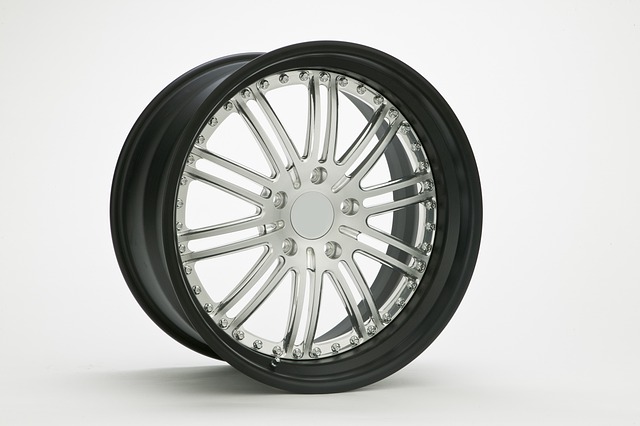Looking to register your car in California? This comprehensive guide walks you through the process step-by-step. From understanding vital requirements to gathering essential documents, this article ensures a smooth experience. Learn how to verify your vehicle’s Identification Number (VIN) using reliable dmv vin verifier tools before completing your registration application. By following these straightforward instructions, you’ll be on the road in no time.
- Understand California Car Registration Requirements
- Gather Necessary Documents for Car Registration
- Visit a California DMV Office or Use Online Services
- Verify Vehicle Identification Number (VIN) Accuracy
- Complete and Submit Your Car Registration Application
Understand California Car Registration Requirements

Before registering your car in California, it’s crucial to understand the state’s specific requirements. The California Department of Motor Vehicles (DMV) mandates that all vehicles operating within the state be properly registered and display current license plates. One essential step is obtaining a Vehicle Identification Number (VIN) verification, which can be done through a DMV vin verifier or a mobile vin inspection service. This process ensures that your vehicle’s VIN is accurate and matches the information in the DMV’s records.
A valid California car registration requires up-to-date documentation, including proof of insurance, vehicle ownership, and identity. You’ll typically need to visit a local DMV office with these documents or utilize their online registration services if available. Some residents prefer the convenience of a mobile vin verifier or mobile vin inspection, which can streamline the initial registration process and save time.
Gather Necessary Documents for Car Registration

Before heading to the California DMV (Department of Motor Vehicles) for car registration, ensure you have all the required documents. The process typically requires your vehicle’s registration certificate from the previous state, a completed application form, and proof of insurance. One crucial document is the Vehicle Identification Number (VIN) verifier, which can be obtained through the DMV or by using a mobile VIN verification service.
For convenience, many opt for a mobile VIN inspection, as it allows you to verify your vehicle’s history remotely. This step is essential in ensuring that your car meets all safety and emission standards. By having these documents ready, including the verified VIN, you’ll streamline the registration process at the DMV.
Visit a California DMV Office or Use Online Services

Visit a California DMV Office or Use Online Services to register your car. If you prefer a more traditional approach, heading to a local DMV office is still an option. You can expect a straightforward process for registering your vehicle, and the staff will guide you through all the necessary steps. Bring along important documents like proof of ownership, insurance, and identification. An alternative method involves utilizing California’s online services, which offer a convenient digital experience. The DMV provides a VIN (Vehicle Identification Number) verifier on its website, allowing you to check your car’s history and eligibility for registration. This is particularly useful for those who prefer the efficiency of mobile vin inspection or want to perform a vin inspection remotely.
When going through the registration process, keep in mind that specific requirements may apply based on your vehicle type. Additionally, online platforms often offer real-time updates and notifications regarding any issues with your VIN, ensuring a smoother experience for both mobile vin verification and traditional registration.
Verify Vehicle Identification Number (VIN) Accuracy

Before you can register your car in California, it’s crucial to ensure the Vehicle Identification Number (VIN) is accurate and legitimate. This number is unique to each vehicle and acts as a digital fingerprint, which is critical for identifying theft and ensuring safety standards. A simple yet effective step is to use a DMV VIN verifier or even a mobile vin verification tool to cross-check the number’s validity. Many modern car manufacturers also offer online resources for checking VINs through their official websites.
A mobile vin inspection can help you verify the VIN’s authenticity quickly and efficiently, especially if you’re purchasing a used vehicle. This process involves using specialized software or tools installed on your smartphone to scan and analyze the VIN data, providing instant feedback on its accuracy. By ensuring the VIN is correct, you take a significant step towards ensuring the car’s history is transparent and free from potential red flags, making the registration process smoother.
Complete and Submit Your Car Registration Application

After gathering all the required documents and ensuring your vehicle meets California’s standards, it’s time to complete and submit your car registration application. You can do this by visiting a nearby California Department of Motor Vehicles (DMV) office or using their online services. If you prefer a more convenient option, consider using a mobile vin inspection service for a same-day verification of your vehicle’s history.
Fill out the application form accurately, providing all the necessary details about your car, including the Vehicle Identification Number (VIN). The DMV’s vin verifier tool can help you cross-check and validate this crucial piece of information. Make sure to include any additional fees and ensure that your registration is up-to-date before submitting your application.
Registering your car in California is a straightforward process that requires understanding the state’s requirements, gathering essential documents, and verifying your vehicle’s identification number (VIN) accuracy. You can either visit a local DMV office or utilize online services for convenience. Remember to complete your application meticulously to ensure a smooth registration experience with minimal back-and-forth communication. Tools like a dmv vin verifier can prove invaluable during this process, making it easier and faster to meet California’s car registration standards.
